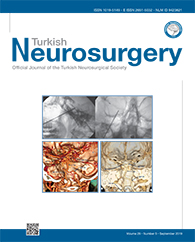2Acibadem Mehmet Ali Aydinlar University, Department of Orthopaedics and Traumatology, Istanbul, Turkey DOI : 10.5137/1019-5149.JTN.25968-19.3 AIM: To compare posterior surgery alone versus combined anterior and posterior surgery for the management of spinal tuberculosis.
MATERIAL and METHODS: Data from 31 consecutive patients who underwent surgery for spinal tuberculosis were analyzed retrospectively. Patients were divided into two groups as group A (posterior surgery alone) or group B (combined anterior and posterior surgery), and groups were compared in terms of invasiveness of the procedure, spinal deformity, fusion, neurological status, and postoperative complications.
RESULTS: Group A included 16 patients (mean age: 56 years, range: 29â75) with a mean follow-up period of 29 months (range 12â60) while group B included 15 patients (mean age: 60 years, range: 35â73) with a mean follow-up period of 28 months (range 12â60). Procedurally, average operation time and mean length of hospitalization were shorter, and mean blood loss was lower in group A (p<0.05) compared to group B. Postoperative bone fusion took significantly (p<0.05) longer time in group A (10.5 ± 2.1 months)than in group B (9.3 ± 3.1 months), and all patients with a neurological deficit recovered completely during the postoperative period. No significant differences were observed between two groups with respect to postoperative complications (p>0.05).
CONCLUSION: Combined anterior-posterior surgery may not be required for treating vertebral tuberculosis as posterior surgery alone appears to be sufficient.
Keywords : Tuberculosis, Pottâs disease, Spine, Treatment, Surgery, Posterior approach, Combined approach




